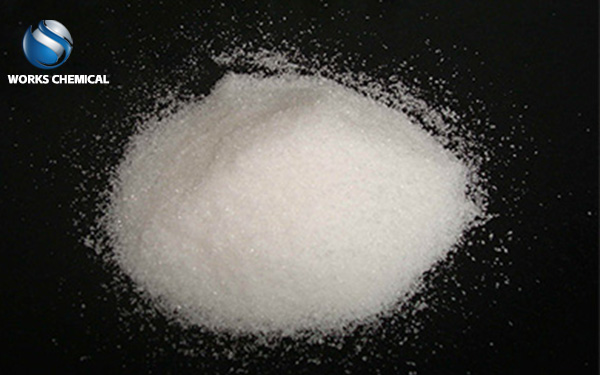
In the fields of sewage treatment and environmental protection, sludge dewatering and reduction disposal have always been important links that attract much attention. Sludge, as a by-product of sewage treatment, has a high water content, large volume and may contain harmful substances, which bring many challenges to subsequent treatment and disposal. However, with the advancement of technology and the enhancement of environmental awareness, the technical means for sludge dewatering and reduction disposal have become increasingly diverse. Among them, the application of sludge efficiency enhancers has injected new vitality into this field.

One. Sludge dewatering: Diverse technologies, Challenges Still Exist
Sludge dewatering is a crucial step in sludge treatment, aiming to remove water from sludge through physical, chemical or biological methods to reduce its moisture content, facilitating subsequent transportation, disposal or resource utilization. Traditional sludge dewatering methods include natural drying and mechanical dewatering (such as pressure filtration, centrifugation, etc.), but these methods often have problems such as low dewatering efficiency, high treatment cost, and high moisture content of the sludge cake.
Especially when dealing with sludge from industries such as printing and dyeing, papermaking, and chemical engineering, due to the complex composition, high viscosity, and poor dewatering performance of the sludge, traditional dewatering methods are even more difficult to achieve the desired treatment effect. Therefore, how to achieve efficient and economical sludge dewatering and reduction disposal has become an urgent problem to be solved in the current environmental protection field.
Two. Sludge Enhancer: A New Powerful Tool for Dewatering and Volume Reduction
Sludge enhancer, as a chemical agent specifically designed to improve the dewatering performance of sludge and enhance dewatering efficiency, has been widely applied in the field of sludge treatment in recent years. It alters the surface structure and properties of sludge, disrupts the colloidal structure of sludge, reduces the viscosity of sludge, and makes sludge particles easier to aggregate and dewater.
The main mechanisms of action of sludge enhancers include:
Bridging effect: The high-molecular compounds in the sludge enhancer can form "Bridges" between sludge particles, enabling them to connect with each other and form larger flocs, which facilitates dewatering.
Electrical neutralization effect: Sludge enhancers can neutralize the charges on the surface of sludge particles, reduce the repulsive force between sludge particles, and make them easier to aggregate and dewater.
Demulsification and defoaming effect: For sludge containing emulsified oil or surfactants, sludge enhancers can break the emulsified structure, eliminate foam, and improve dewatering efficiency.
The application effect of the sludge enhancer is remarkable:
Enhance dewatering efficiency: After applying the sludge enhancer, the dewatering speed of the sludge has significantly increased, and the moisture content of the dewatered sludge cake has notably decreased.
Reduce processing costs: Due to the improvement in dewatering efficiency, the volume and weight of sludge have been significantly reduced, lowering transportation and disposal costs.
Improve the properties of the mud cake: The dehydrated mud cake is easier to handle and dispose of, such as incineration, landfill or resource utilization, etc.
. Application Cases and Benefit Analysis of Sludge Enhancers
Take a certain printing and dyeing factory as an example. When dealing with printing and dyeing sludge, the factory encountered problems such as low dewatering efficiency and high moisture content in the mud cake. By introducing sludge enhancers, the plant successfully solved these problems and achieved efficient sludge dewatering and reduced sludge disposal.
Application effect:
The moisture content of the dehydrated mud cake has decreased from over 80% to below 60%, significantly reducing the volume and weight of the sludge.
The cost of sludge treatment has been reduced by more than 30%, enhancing the economic benefits of the enterprise.
The dehydrated mud cakes are easier to transport and dispose of, reducing the risk of environmental pollution.
Benefit Analysis:
From the perspective of economic benefits, the use of sludge enhancers reduces the cost of sludge treatment and enhances the profitability of enterprises. From the perspective of environmental benefits, the efficient dewatering and reduced disposal of sludge have decreased the pollution of sludge to the environment and protected the ecological environment. From the perspective of social benefits, the application of sludge enhancers has promoted the progress and development of sludge treatment technology and made contributions to environmental protection.
Iv. Conclusion
Sludge dewatering and reduction disposal is an important issue in the field of environmental protection, and the application of sludge efficiency enhancers provides an effective solution to this problem. By improving the dewatering performance of sludge, enhancing dewatering efficiency and reducing treatment costs, sludge enhancers have demonstrated broad application prospects in the field of sludge treatment. In the future, with the continuous advancement of technology and increasingly strict environmental protection requirements, sludge enhancers are expected to play a more significant role in the field of sludge treatment and contribute more to the cause of environmental protection.